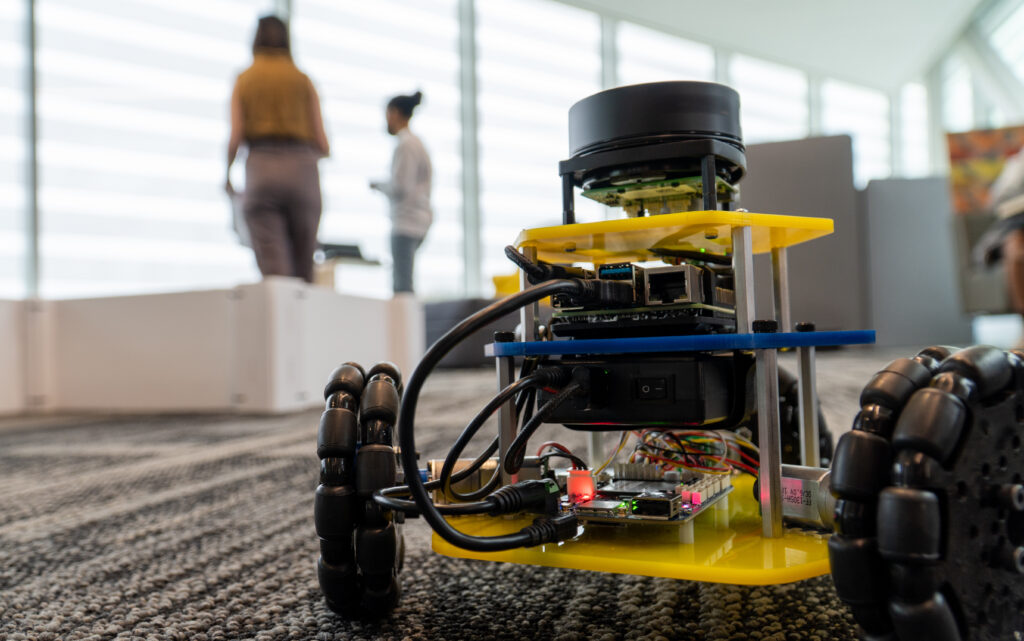Robotics Undergraduate Program

Michigan Robotics received state approval from the Michigan Association of State Universities on June 2, 2022 to establish an undergraduate program. We launched the Robotics undergraduate major for the Fall 2022 term.
Jump to scheduling and advising information, program requirements, current course options, or review our Robotics Undergraduate Program Guide for more information.
Because robotics is so interdisciplinary, most engineering disciplines offer routes into robotics. Many students in our graduate program come from mechanical, electrical, or computer engineering backgrounds, but also from aerospace engineering, naval engineering, information science, kinesiology, biomedicine, or other fields. There are also several undergraduate project teams where students can learn and apply skills while competing in international competitions.
We now offer a SUGS program, but not a minor. We will work to establish the minor in the future.
Current undergraduates: keep up-to-date with Robotics
Undergrad Q&A Forum on Piazza
Post any Robotics-related questions as well as contribute to the discussion threads.
U-M email required.
Robotics Events
See what’s happening in Robotics, especially the next Robotics Pathways and Careers Speaker Series.
Frequently asked questions
Can I get a minor in robotics?
Currently, we do not offer a Robotics minor and do not yet have a timeline for when the minor may be available.
What are introductory Robotics classes like?
100-level Robotics classes cover topics such as computational linear algebra, robotic mechanisms, and introduction to programming and artificial intelligence.
This brings the typical upper-level topics to first-year undergraduates, allowing you to cover engineering fundamentals of math and science through robotics projects, an approach we call “coding is believing.”
Get a greater sense of each course below:
How can I get a tour of the new building?
There is a self-guided audio tour of the building for anyone to take at their own pace as they explore the building. Just bring your own mobile device capable of web browsing and your headphones whenever the building is open from Monday to Friday, 7am to 7pm. The audio tour should take roughly 30 minutes.
We recommend that interested prospective undergraduates sign up for a tour with the College of Engineering Undergraduate Admissions.
How can I use Robotics’ facilities and resources like M-Air or the Makerspace?
M-Air can be used by research groups, student teams, or courses. More information on M-Air and how to reserve it can be found on the M-Air site.
The Makerspace is designed for use by student teams and MDP projects.
How do I apply as an undergraduate?
Current U-M students can get in touch with our advising team to declare Robotics as their undergraduate major.
Interested prospective undergraduates can find out more about applying to the College of Engineering. Please note that students coming to U-M will be admitted to the College of Engineering (not a specific department) and will declare their major afterwards. Please see the College of Engineering Bulletin for more information on declaring a major.
How do I find out about or apply for financial aid?
More information on financial aid for undergraduates can be found at the College of Engineering’s scholarship and funding site.
More questions?
If you are not a U-M student, please contact Engineering Recruitment and Admissions.
For current students, questions about the Robotics Undergraduate Program can be sent to robotics-sso@umich.edu.